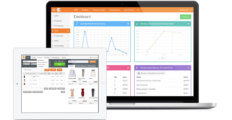How do you optimize conversion forms? Here are 7 best practices to do it. These are proven techniques and are distinct from creating an intuitive website conversion path, which, as should be pointed out, is your broader lead generation goal.
- Target the audience’ engagement level
- Have the right number of fields
- Give it a CTA headline
- Place it on the right spot
- Connect it to a pipeline
- Make it mobile responsive
- Be GDPR-compliant

Are you frustrated with your lead volume even as you have a compelling free offer? Or maybe you do have plenty of leads… but they lead to nowhere. They may be signs you need to replace your CRM. But before you do that and before you dump the offer (or your sales reps), you might want to look at something that’s seemingly trivial, but can turn the tide: your web form.
The chances of getting quality leads off your web form seem stacked against you. Study findings on marketing-qualified leads posted by FormAssembly indicate that only 27 percent of form-generated leads will be qualified. The rest, more than 70 percent, are wasted.
Not if you can help it.
An optimized form makes for an effective lead qualification process. Properly designed and distributed, it will give you quality over quantity leads, and help your sales reps pursue the dollar.
The key is to optimize it and we have the goods below

Form is actually the last leg in the race of turning website visitors to leads, as you can see here (HubSpot).
7 Best Practices To Optimize Your Conversion Forms
At the end of the day the form can make or break the campaign no matter how good the latter was thought out, budgeted and executed. So give your form a close scrutiny because, well, you wouldn’t want to run a good race only to falter at the finishing line. Here are 7 best practices to optimize your conversion forms.
1. Target the audience’ engagement level
Your landing page should have this spelled out early on, so it’s really a matter of weaving the form into the page’s key messaging. A lazily crafted general form creates dissonance and lays waste to a well-crafted landing page. Does the form speak to prospects at a level of engagement they’re on the way your landing page does?
What you put in the form matter as what you don’t. Its ability to qualify leads rests on the number of fields, CTA and other elements that you’ll add to the form. There should be no extra parts to it that create noise, or a missing part that prevents the engine from perfectly humming.
In general, the form should be targeted at only one engagement level — where prospects are in the buying cycle — not two, and definitely never all of them:
- Prospects who are already pre-sold. Little copy is needed on the landing page to convince prospects, so the form, in fact, should be the highlight with a CTA that informs, rather than motivates, to take prospects to the next step. For instance, contacting a sales rep. More specific fields are required to get more details from prospects.
- Prospects who are interested. The landing page needs a sizeable copy to push interest to motivation. The CTA motivates rather just inform, while the form may require less number of fields, but they go beyond basic information as name and email alone.
- Prospects who are uncertain. The landing page copy will be the longest here to explain the offer further. The form occupies a lesser position (may even be placed below the fold) and requires only the basic fields as name and email for least opt-in friction.
These just affirm the fact that a CRM platform can help users beat sales objections. Now, with your target audience’s engagement level clear, let’s expound on the elements that go into the form.
2. Have the right number of fields in your form
The common advice here is to keep the form short. But that’s not entirely accurate. It should be–keep the form at its shortest possible length. As we’ve explained above, the number of fields depends on your target audience.
So a form for pre-sold prospects can be longer but still more optimized than a shorter form for prospects who are uncertain, if the latter has one too many fields. For example, asking a phone number for early-stage leads creates opt-in friction; thus, the form isn’t optimized even if it’s short.
What should go into the form for each target audience? This is a general framework on the number of fields to move leads across the buying cycle:
- Start with a name and email address only. These are two personal details that most of us will share on a whim for a freebie. The goal is to establish a communication line (email address) with the least friction, so you can follow through with more offers.
- Hone in on their interest. If prospects ask for more, you can embed more specific fields to shape the offer around their interest or information. This can be knowing the content type they want, their territory (for location-based deals) or frequency of your emails. The goal here is to keep the engagement going based on their preferences, not yours.
- Ask for more details. Once prospects are sold to your offer, it’s time to get more information for a sales call. These can be the prospects’ full name, mobile number, age, etc. The aim here is to help sales personalize their pitch. But ask only for the most basic details that matter to your sales. Requiring income level or home address where it’s irrelevant can create unnecessary friction.
3. Give your form a CTA headline
The form should have its own CTA headline and button, apart from the landing page CTA. The form’s CTA moves prospects to the next buying stage by taking a specific action, such as: “Register for the event now;” “Claim your seat here;” or “Start your free trial.”
When we talk about CTAs, verbs easily come to mind,”download,” “sign up,” “submit,” etc. But when used alone verbs are vague and, worse, make prospects feel like being ordered to do something.
So, make sure to specify a noun to make the CTA specific to your offer and, in fact, sound like an offer, not a command. In our examples above, “event,” “seat” and “free trial” paints a crystal-clear picture what prospects are getting by taking an action.

Give your form its own CTA, distinct from the landing page’s.
4. Do you place the form above the fold?
We’ve heard the merit of placing the form above the fold (the visible first half of the screen without scrolling). It does have a grain of truth, but the whole bushel of wheat we now know is more complicated. What do we mean?
That the fold has less to do with the form than with the landing page copy. After all, before prospects get to the form they have to be motivated first, right? That’s the job of the landing page copy, where headline, subheading, callouts and possibly bits of the body are compelling enough to make prospects scroll. In fact, placing the form above the fold eats up prime real estate that’s better allocated to copy.
The above-the-fold mantra with its print journalism origin might have been exacerbated by this study on web page visual appeal, concluding that ,“You have 50 milliseconds to make a good first impression!” That may be true for the landing page as a whole, but the form is just a slice of the cake.
Perhaps, the only time the above-the-fold rule applies to form is when you’re dealing with pre-sold leads, prospects who might as well be harking, “Sign me up, where’s the form?”
5. Connect it to a pipeline
Is your form a part of an optimized conversion path? Does it connect to your CRM? If not, and you have to manually sort form-generated leads, or at best, they’re thrown into a spreadsheet, you’re not optimizing the form. You run the risk of data siloing your leads and losing opportunities.
Here’s an example of an optimized conversion process. The HubSpot form builder automatically sends leads to your HubSpot CRM contacts. That means you get to use smart filters to sort high-quality leads, spot duplicates, score leads or create mailing lists by lead traits.
You then get to feed your sales funnel with qualified leads, track their progress as you nurture them up to the point when they’re ready to be handed over to sales. Sales takes over and nurtures prospects until conversion or, if necessary, loops them back for more nurturing.
The whole thing acts like a well-oiled machine and it’s triggered by a form that’s connected to this pipeline.
You may want to catch up on some proven ways to nurture leads and increase sales.

When your form is connected to your sales pipeline, you can easily track leads all the way to deals and conversions, as this HubSpot pipeline dashboard shows.
6. Make it mobile responsive
Mobile is the new frontier in B2B space. In a research by the Boston Consulting Group, mobile is driving the revenue of marketing leaders by as much as 40%. The study speeds up the buying cycle and increases the rate of repeat buys. These are compelling data to make your form adapt to mobile screens while highlighting the need to come up with a mobile CRM strategy.
The good new is, many form builders are mobile-responsive. For example, HubSpot uses a 12-column responsive grid system that makes the web page (and the form in it) adjust to almost all screen sizes. The rows and columns automatically stack on a mobile screen, so your form keeps its fields.
For long forms, prioritize the required fields over optional ones. In a stack layout as with mobile forms, the most essential data are filled in first.

Does your form adapt to different screen sizes, as this HubSpot form can?
7. Be GDPR-compliant
The General Data Protection Regulation or GDPR swept into action on May 25, 2018. But what is GDPR? It’s the EU law governing data privacy in the EU. Sure, you do business in the U.S. or elsewhere, but the minute your form accepts personal data from an EU citizen you may be subjected to the law’s penalties, which spell euros.
So, how do you make your form GDPR compliant? In many ways, if you keep to the spirit of CRO (conversion rate optimization) best practices, or you use CRO software to optimize landing pages, your form is likely compliant. We can summarize the key GDPR requirement, as follow:
- No bundling of consent. If you’re asking for newsletter subscription, the request should be specific to that. You can’t lump it with other offers or something hazy as, for instance, agreeing to your general terms as well.
- No pre-checked boxes. Also called negative opt-ins where prospects have to untick the checkbox to refuse your offer, this is now prohibited. Leave all checkboxes blank and you’re safe.
- No general opt-ins. Similar to bundling offers, if you’ll be contacting prospects via different channels (email, social media, phone, SMS), you should specify which channel. There should be a checkbox for each option, giving prospects control over choice. If you want to go deeper into the nitty-gritty of the law, this GDPR compliance steps should get you up to speed.
Do you want to get your forms right fast?
One of the quickest ways to get your form right is to use a smart form builder. There are plenty of form automation software out there. What you want is something that’s coding-free, comes with drag-and-drop simplicity and affords a wide range of customization to match your specs. To help you picture what a smart form builder is, you can use HubSpot Form Builder as an excellent benchmark. It has what it takes to cover all the components of a lead capture form.
HubSpot Form Builder is free and integrated with HubSpot Marketing, which also has a free version. You can easily sign up for HubSpot Form Builder free tool here.

A form builder like HubSpot allows you to create as many fields as necessary, or as less, to match your target audience.
Here’s a rundown on what makes HubSpot an awesome form builder:
- Adapt to different form types. A smart form allows you to run a variety of campaigns from surveys to quizzes to opt-ins. The HubSpot form builder, for instance, can create up to 1,000 forms using twelve different field types, such as, dropdown, checkbox, date picker or text.
- Connects to a CRM database. What good is collecting leads when you can’t manage them? You should look for a form builder that can feed the leads directly to your lead pipeline and track their progress. HubSpot is tuned in to this setup.
- Its form builder is integrated into the HubSpot marketing automation (available in paid plans), CRM and sales software. This saves you tons of time and effort scoring leads and nurturing them until they’re ready to be handed over to sales. You can also easily scale to managing a greater volume of leads once your campaign hits virality.
- Smart functions. These are features that help you connect better with website visitors, coaxing them to engage your offer. For example, HubSpot uses progressive profiling that anticipates returning website visitors’ questions based on their past engagement. The form also adapts to the website visitor’s questions and can be triggered to send a follow-up email once information has been submitted.
Are you ready to optimize your conversion forms?
Optimization techniques are meant to help you get the most out of your CRM. If you want to try a smart form that costs nothing to your wallet we recommend you sign up for HubSpot Form Builder free tool here. Once you have a proper tool to speed up your workflow just follow the tips outlined above and do share a comment with our readers on how much improvement you’ve merited.



























Leave a comment!